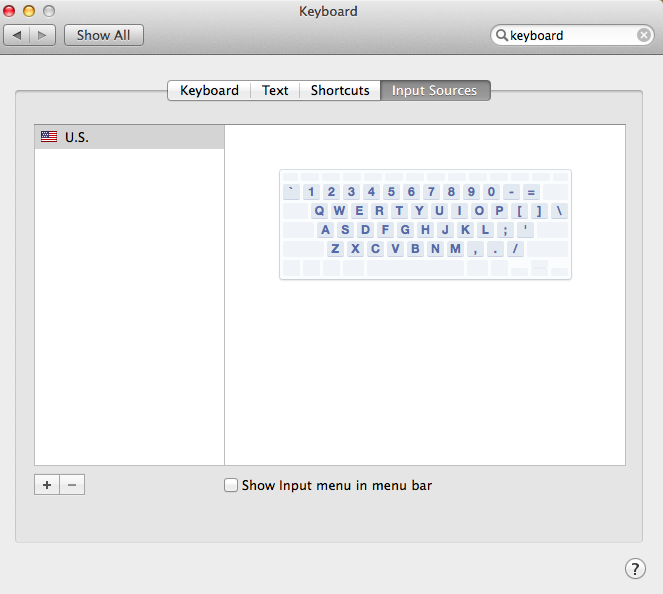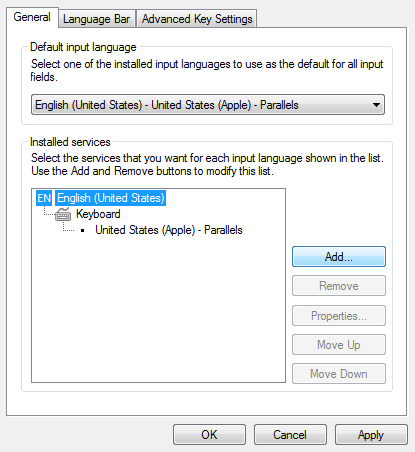see Emacs in Microsoft Windows FAQ Mac. Emacs is installed on macOS by default, but a very old version, version 22.1, dated 2007. In terminal, type: which emacs check if emacs is installed and in your path. Emacs -version print version. Emacs launch emacs. (to quit, press Ctrl+x Ctrl+c) Download Latest Emacs for MacOS. Download at http. Download this app from Microsoft Store for Windows 10 Mobile, Windows Phone 8.1, Windows Phone 8. See screenshots, read the latest customer reviews, and compare ratings for Pinyin.

This article explains how you can turn your English-only keyboard into an English-Korean dual keyboard in a reversible manner so that you can type Korean characters on a computer.
Before We Begin
• If you only want to read Korean (documents or Websites), you don’t need to do anything. The Windows and Mac operating systems have basic Korean fonts activated by default, which will display Korean texts.
• This article is intended for those who wish to input Korean characters occasionally, while keeping English as the primary language of the computer. Converting your computer’s entire user interface into Korean involves a different procedure, which will not be covered by this article.

The Windows and Mac operating systems offer a Korean keyboard option, which you can implement in a few simple steps. With this feature activated, you can switch back and forth between English and Korean as you type, even at mid-sentence. Implementing this option changes little in your computer’s user interface (the only difference you will notice is a tiny icon showing up in your taskbar), and you can deactivate the feature at any time.
In the Korean mode, your keyboard will work as shown in the large image at the top of this article. All the consonants are entered by the left hand; all the vowels (except the one colored red in the figure) are entered by the right hand. The shift keys are used only for five compound consonants (shift + Q, W, E, R and T keys) and two compound vowels (shift + O and P keys).
If your operating system is Windows 10, stay on this page -- the implementation steps are shown below. For other operating systems, make a selection in the box to move to the appropriate page.
Click for Windows 8
Click for Mac OS X
Click for Windows 7
1) Click the Windows Start button (located in the lower left corner of your desktop), and click the gear icon (the Settings button).
2) Select “Time & Language”.
3) In the left panel, select “Language”.
4) In the new panel that opens, there are many clickable icons. Just click the + sign, which is near the bottom of the view, under 'Preferred languages'. Adding Korean as a “preferred” language will not make Korean preferred over the existing default language (English). Unless you make the extra efforts of manually moving the newly added language to a position higher than English (which this article will not show), Korean will be placed at a position less “preferred” than English, and the Korean keyboard will only perform auxiliary functions.
Note: The current illustration is made with the October 2020 release of Windows 10 (version 20H2, build 19042). If your Windows 10 has not been updated from an earlier release, the interface may have a slightly different look. For example, in the November 2019 release (version 1903), the section title of the bottom half of the panel is simply 'Language' and the phrase next to the + sign reads 'Add a preferred language'.
5) In the search box, type “Korean”, and hit the Enter key of your keyboard. The Korean language option will appear below the search box. Click “Next”.
6) There are 4 features that most of the readers of this article would never need. Uncheck the options as indicated in the picture (Install Language Pack; Set as my winsows display language; Text-to-speech; Handwriting).
Note: If you have an older version of Windows 10 (such as version 1909), the 4 options may appear in a slightly different arrangement.
7) After unchecking the options, the panel should look as shown below. You are going to install only the bottom 3 features (Basic typing; Optical character recognition; Supplementary fonts), which are apparently obligatory installation requirements. Click “Install”.
When you purchase a computer, the Windows operating system already comes with an adequate number of basic Korean fonts. In this installation step, it appears that some additional Korean fonts are downloaded to give you a longer list of available Korean fonts.
The panel now shows 'Korean' as an available language (with only one icon displayed -- 'abc' indicating the keyboard function). It also says 'Language pack available', but most readers of this article would not need it (if you need the Korean spellcheck function in addition to simple typing, the instructions are given below).
8) The setup is now complete. You will notice a tiny new icon (“ENG”) appearing in your taskbar, next to the clock. That icon is a toggle switch you will use to move back and forth between the English-Only mode and the Korean-Enabled mode of your keyboard. How to use this switch is explained in the following section.

How to Alternate Between the English and Korean Keyboards
Open an application that will give you a space to type something onto. For example, open Notepad, MS Word, Excel or a browser window showing an actual input field such as a Google search window. (If the space where your cursor is placed on has no text input space, the language icon will not behave as illustrated here.)
As long as the language icon next to the clock is displayed as “ENG”, your keyboard is locked in the English-Only mode and typing Korean is not possible. If you click the language icon, it will let you choose between two options: 'ENG' and (Korean).
Select the second item (Korean Microsoft IME; IME stands for 'input method editor'). (The third item simply shows the setup window again.)
As shown below, the language icon is now changed to , and you will see yet another status indicator (“A”). Can you type Korean now? Not yet. The icon indicates that the keyboard has been freed from the English-Only mode and your keyboard is now in the Korean-English dual mode. But the “A” indicator shows that the keyboard language at the moment happens to be English (symbolized by “A”, the first letter of the English alphabet). In other words, the Korean keyboard is not engaged.
Whenever you are ready to type Korean, click the “A” symbol, which will then change to a Korean letter '가' . While the symbol is shown as '가', the keyboard is in the Korean mode and you can type Korean.
You can hit the symbol again at any time to change it back to “A” to type English.
If you prefer, you can also hit the ALT key to alternate between 'A' and '가'. (A keyboard has two ATL keys, but only the ALT key on the right side will work for this purpose.)
To lock the keyboard stably in the English-Only mode, move out of the dual mode by clicking and choosing the top line ('ENG').
When writing Korean on paper, you need to arrange the consonants and vowels into square-shaped clusters (each square being a syllable). But on a computer keyboard, you can simply type them in linear sequence. The computer will automatically assemble them into syllabic clusters.
Let's type the Korean word for 'summer', which looks like this:
여름
This 2-syllable word contains 5 phonetic elements:
ㅇㅕㄹㅡㅁ
Before typing, make sure your language mode is in the mode and you have converted the 'A' symbol to the '가' symbol.
Now, type the 5 necessary elements one at a time. You will see that the computer uses the first 2 elements to form the first cluster and the rest 3 to make the second.
For another example, let's type the Korean word for 'fruit', which looks like this:
열매
Like 'summer', this word has 2 syllables and 5 phonetic elements:
ㅇㅕㄹㅁㅐ
Type the 5 elements. You will see that, this time, the computer uses the first 3 elements to construct the first syllable, and the rest 2 to make the second. But you don't need to concern yourself with the rules behind it. It is done automatically by the computer. If you wish to learn more about how the Korean consonants and vowels are put together into syllabic clusters, you may find our 'Korean Alphabet Made Easy' article helpful.
Undoing This Installation
To remove the Korean keyboard availability, repeat Steps 1 through 7. Under “Preferred Language”, click “Korean” – the line then expands to reveal a “Remove” button. Click “Remove”.

About Korean Spellcheck
The steps shown above deliberately avoided adding the Korean spellcheck function. After implementing the basic typing function, if you want to add the Korean spellcheck function as well, the simplest way is to open Microsoft Word, and type a Korean phrase. Then, force MS Word to start checking the spelling by opening the Review tab and clicking the'Spellling' button). At this point, MS Word will display a message saying, “Missing Proofing Tools: Text in Korean is not being checked. Do you want to download proofing tools?”. If you click “Download”, downloading and installation of the Korean spellcheck will begin and the system will display simple instructions for you to follow (these instructions are in Korean only, not in English).